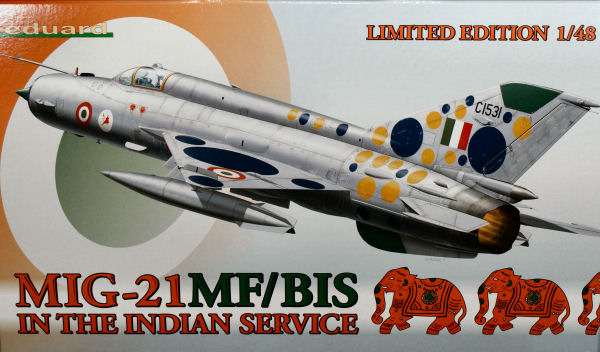
Eduard 1/48 MiG-21MF/bis in Indian Service Kit First Look
by Michael Benolkin
| Date of Review | June 2012 | Manufacturer | Eduard |
|---|---|---|---|
| Subject | MiG-21MF/bis in Indian Service | Scale | 1/48 |
| Kit Number | 1171 | Primary Media | Styrene, photo-etch |
| Pros | Best kit of the MiG-21 in any scale | Cons | See text |
| Skill Level | Experienced | MSRP (USD) | $69.95 |
First Look
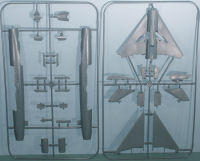 |
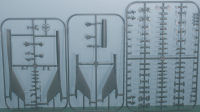 |
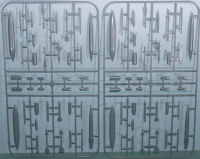 |
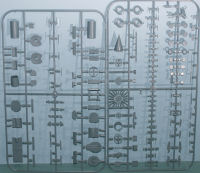 |
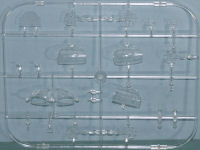 |
 |
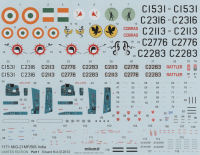 |
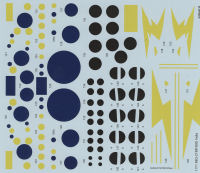 |
The MiG-21 is one of the most successful supersonic fighters ever produced. The first production MiG-21 was a day fighter that was equipped with 2 NR-30 30mm guns and a range-only radar that would provide optimum firing range data for the pilot, similar to the F-100 Super Sabre. Like the F-100, these early MiG-21s were not effective in clouds or adverse weather, so an air-intercept radar was added along with two infrared homing missiles (K-13 Atoll) and the guns were deleted. This first all-weather interceptor was the MiG-21PF (NATO Codename: Fishbed D). To enhance landing performance as well as pilot safety, the next version would replace the Fowler flaps with engine-blown flaps to reduce landing speeds as well as replace the forward-hinged canopy that acted as a supersonic shield during high-speed ejections. The problem with the canopy was that while it protected the pilot from supersonic wind blasts during ejection, it was also notorious for not coming off the seat after ejection to allow the pilot to deploy his parachute. This new version was the MiG-21PFM (NATO Codename: Fishbed F) and all subsequent versions of the Fishbed were equipped with a side-opening canopy and the KM-1 ejection seat.
The MiG-21R (NATO Codename: Fishbed H) was a dedicated reconnaissance variant that carried a recce pod on the fuselage centerline instead of an external fuel tank. To compensate for this fuel loss and to enhance its range, the MiG-21R had two more pylons added to the outboard section of the wing plumbed for external fuel tanks. These outboard pylons could also carry any of the weapons that could be loaded on the inboard pylons. This four-pylon wing configuration would appear on all subsequent MiG-21 variants.
Following the MiG-21R was a wide range of MiG-21s that represented the first increment of the Generation Three fighters and were all NATO Codenamed Fishbed J. These included the MiG-21M, MiG-21MA, MiG-21S, MiG-21SM, and the primary export variant, the MiG-21MF. The reason all of these variants were given a common NATO designator was that the Soviet model numbers were not commonly known in the west and externally, they all looked alike (especially in grainy black and white photos). Like the MiG-21R, the MiG-21MF (and its kin) had four underwing pylons, centerline pylon, and a new addition - the GSh-23 twin-barrel 23mm cannon. The gunfighter had returned. In combat operations, the MiG-21MF (and its kin) could carry weapons on its two inboard pylons, but for the first time it could also carry two underwing fuel tanks and a centerline tank for extra range and tops this off with the new gun. One other improvement not immediately evident with the Fishbed J was the R-13 engine that replaces the R-11 used in previous MiG-21 variants. US aircrews knew that they could fly faster than the Gen 1/Gen 2 MiG-21s on the deck, but the R-13 added a two-stage afterburner that gave the pilot two thrust settings: fast and faster. With the R-13 in the North Vietnamese MiG-21MFs, US aircrews couldn't shake off these new MiGs quite as easily.
Eduard has released the latest installment of their generation three MiG-21 series in 1/48 scale: the MiG-21MF/bis in Indian Service. The Indian Air Force has been flying the MiG-21 since generation one and with great success. During one of their early skirmishes with the Pakistani Air Force, an Indian MiG-21 shot down an Pakistani F-104 during one encounter.
The kit is molded in dark gray styrene and presented on nine parts trees, plus one tree of clear parts, and two frets of photo-etched parts. Two sheets of decals and a set of yellow masks round out this kit.
When you open the box, you can quickly see that this is still the best MiG-21 kit produced by anyone in any scale to date. While I do like the Trumpeter 1/32 MiG-21MF and MiG-21UM kits, they have a few issues that are not in this box. First of all, the detailing is sharp and petit, no sign of the 'mad riveter' here. Second, the kit isn't over-engineered - you don't have details rendered in areas where you'll never see them again once the kit is built.
This kit will render your choice of MiG-21MF or MiG-21bis straight out of the box. The key external difference between the two versions is the dorsal spine. Ths kit has the MF and bis dorsal spines with integral vertical stabilizers for both types.
Like any good aircraft kit, construction begins with the nose wheel well. Okay, so it is supposed to start with the cockpit, but once you get the wheel well walls and bulkheads in place, you flip the part over and install the cockpit - close enough. The cockpit comes with a nice set of color-printed photo-etched parts as only Eduard can do them. Take care to match the turquoise blue-green color on the rest of the cockpit interior and the hard detailing is already done for you.
Next is the afterburner chamber and nozzle assembly. You're going to love the depth of the flame holder away from the turbine face (something that is usually molded together).
This kit has the entire interior fuselage mid-section here that represents in full-depth the main wheel wells. If you want to see some interesting engineering origami, watch some You-Tube videos on the MiG-21 and MiG-23 landing gear retraction tests and see how those wheels are moved around to fit into those unusual spaces.
This is one of very few kits that got the unique centerbody radome shape captured right. When you have the cockpit, afterburner section, and wheel well section completed, these all go together with the centerbody inside the fuselage halves.
Eduard did a nice job in making the kit adaptable to easily render the other third-generation MiG-21s out of this tooling with minimal parts changes. The main difference - the dorsal spine - requires different parts for the spine and vertical stabilizer as the spine fairs into the tail in different places depending on MiG-21 variant. These are provided on their own tree. The kit does provide two different types of instrument panel and three sets of canopies to render the MiG-21MF (or SM if you'd like), MiG-21SMT, or MiG-21bis.
The forward airbrakes are molded closed on the kit to ease assembly and filling, but if you want to portray these open, simply remove the air brake petals along the cut lines, insert the well interiors, then install the brakes themselves.
The wings, like the rest of the kit, are common to all three variants that will be portrayed by Eduard. One exception is an oblong panel on the upper surface of the wing near the wing root. For this detail, Eduard provides your choice of photo-etched scribing mask or decals to replicate that detail.
Among the features of this kit:
- Detailed cockpit w/color photo-etched parts for both MF and bis
- Detailed KM-1 ejection seat
- Positionable canopy
- Detailed afterburner chamber and nozzle
- Detailed main wheel wells (nose gear well nice too)
- Positionable rudder
- Positionable flaps, ailerons and stabilators (with some minor tweaks)
- Positionable speed brakes
- Choice of MF or bis dorsal spines and canopies
- Choice of plastic or PE wing fences
- Choice of plastic or PE FOD shields under auxiliary blow-in doors
- Paint masks
External stores include:
- 2 x RS-2US (AA-1 Alkali)
- 2 x R-3S (AA-2 Atoll)
- 2 x R-3R (AA-2 Atoll)
- 2 x R-13 (AA-2 Atoll)
- 2 x R-60 (AA-8 Aphid)
- 2 x S-24 240mm rockets
- 8 x FAB-100 bombs
- 2 x FAB-250 bombs
- 2 x MERs
- 2 x external underwing tanks
- 1 x centerline external tank
- 2 x SPRD RATO bottles
Markings are provided for five aircraft:
- MiG-21MF, C1531, 101 Sqn, Sirsa AB, India, early 1990s
- MiG-21bis, C2283, 3 Sqn, Pathankot AB, India, early 1990s
- MiG-21bis, C2113, 15 Sqn, Jodhpur AB, India, 1990s
- MiG-21bis, C2776, 26 Sqn, Adampur AB, India, early 1990s
- MiG-21bis, C2316, 24 Sqn, India, 1990s
The distinctive markings are will done and provide some nice variety of subjects. Eduard has selected a nice cross-section of line and colorful aircraft in this release and the decals are provided on two sheets.
These MiG-21 kit from Eduard are easily the nicest MiG-21s produced to date in any scale (less than 1:1). To date they're produced the MiG-21MF in several boxings, the MiG-21SMT, and the MiG-21bis / MiG-21bis SAU. I hope that Eduard will go back to Gen Two and even Gen One for the day fighters.
My sincere thanks to Eduard for this review sample!







